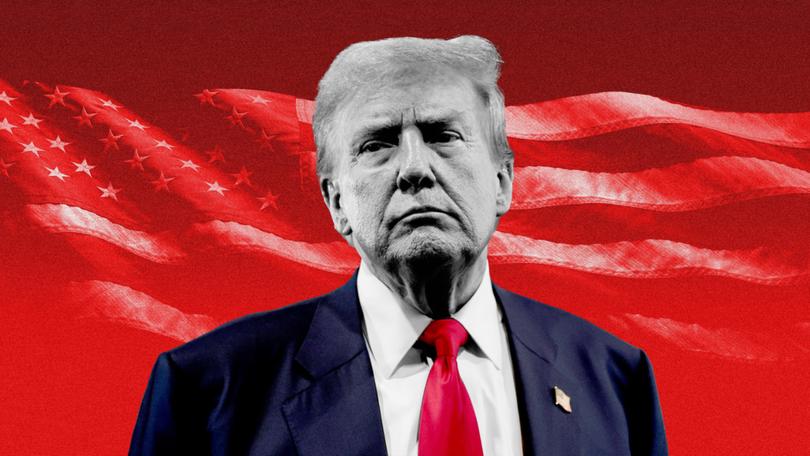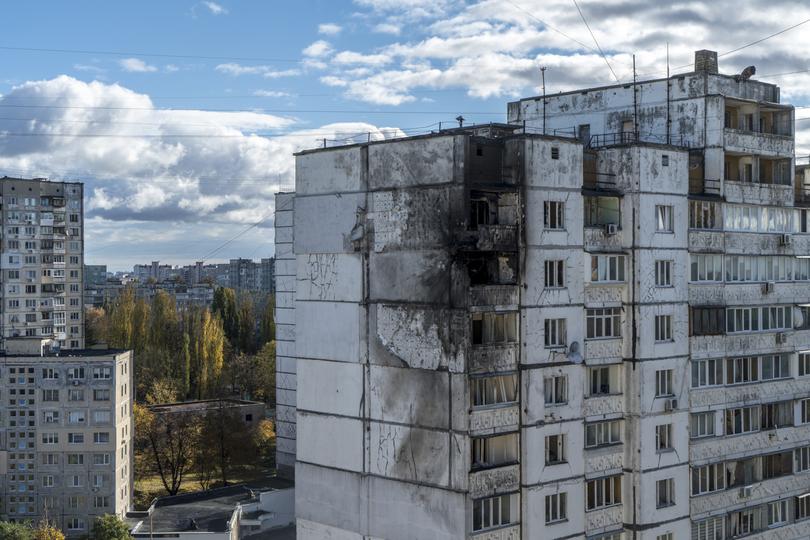Donald Trump’s vow to end the war could leave Ukraine with few options

WASHINGTON — Two years ago, Gen. Mark Milley, then the chief military adviser to President Joe Biden, suggested that neither Russia nor Ukraine could win the war. A negotiated settlement, he argued, was the only route to peace.
His remarks caused a furore among senior officials. But President-elect Donald Trump’s win is turning Milley’s prediction into reality. Trump has made clear his distaste for continuing to help Ukraine take back territory seized by Russia, making a negotiated settlement the only real viable option left.
The ascendance of Trump as Ukraine suffers losses on the battlefield in fact means less room for Ukraine to manoeuvre.
Sign up to The Nightly's newsletters.
Get the first look at the digital newspaper, curated daily stories and breaking headlines delivered to your inbox.
By continuing you agree to our Terms and Privacy Policy.One of the biggest unknowns for Ukraine is whether the Trump administration and Europe will provide any kind of security guarantees that would prevent Russia from trying to take more territory. Trump has said he would end the war quickly, though he has not explained how. But Vice President-elect JD Vance has outlined a plan that would allow Russia to keep the Ukrainian territory it has taken.
A phone call just after the election between Trump and President Volodymyr Zelenskyy of Ukraine shed little light on the question of security guarantees. Aides to both men simply described the tone of the call as “positive.”
Some officials in the Biden administration have suggested taking more assertive measures in the remaining two months they have to help Ukraine, such as allowing the country to use U.S.-supplied longer-range missiles to strike inside Russia for the first time.
In recent days, Biden authorized the use of those missiles, known as ATACMS, for Army Tactical Missile Systems. Ukraine used them Tuesday to strike an ammunition depot in southwestern Russia, according to Ukrainian officials.
On Wednesday, Defence Secretary Lloyd Austin said the Biden administration had approved supplying Ukraine with U.S. anti-personnel mines to bolster defences against Russian attacks as front lines in Ukraine’s east buckled.
But Biden’s last-minute steps to give Ukraine weaponry it has been requesting for years are unlikely to change much on the battlefield.
The White House has said it will allocate the remaining $9 billion in security assistance before Trump takes office. Of that amount, the administration plans to give Ukraine just more than $7 billion worth of arms and munitions from Pentagon stocks, and about $2.1 billion to order more weapons from U.S. defence contractors.
In meetings in Kyiv, Ukraine, last month, Austin and top Ukrainian military officials discussed which arms and munitions the United States was likely to send in the next five months — or roughly through March — so that Ukraine’s commanders could budget their war plans accordingly.
Of course, the new administration could put those shipments on hold. But Pentagon officials have expressed confidence that it would be challenging for the Trump administration to suspend aid that has already been approved by Congress and set into motion.
In another shift this month, the Pentagon said it was lifting a ban on U.S. military contractors deploying to Ukraine to help the country’s military maintain and repair U.S.-provided weapons systems, particularly F-16 fighter jets and Patriot air defenses.
The Defense Department is soliciting bids for a small number of contractors who would be far from the front lines and would not be fighting Russian forces, a Pentagon official said.
Pentagon officials are aiming to award contracts before Biden leaves office, though the process typically takes four to nine months.
Several U.S. companies already have personnel in Ukraine fulfilling contracts for the Ukrainian government.
The administration’s decision to allow Ukraine to use the ATACMS missiles to strike inside Russia was a major change in U.S. policy. It came partly in response to Russia’s decision to bring North Korean troops into the war, officials have said.
Biden and his top aides had repeatedly rejected such requests from Ukraine, arguing that the Pentagon had few of the missiles to spare and that Ukraine could more effectively hit targets deep inside Russia with the one-way attack drones it manufactured in large quantities.
But the escalation risk of allowing Ukraine to strike Russia with U.S.-supplied weaponry has diminished with the election of Trump, Biden administration officials believe, calculating that President Vladimir Putin of Russia knows he has to wait only two months for the new administration. Trump is believed to view Russia more favourably, and his choice for director of national intelligence, Tulsi Gabbard, has often repeated Kremlin talking points.
Even with additional aid, officials in the intelligence community as well as at the Pentagon say it will be difficult for Ukraine to regain the ground that Russia has steadily seized over the past few months.
Ukraine is losing territory in the east, and its forces in the Kursk region in western Russia have been partly pushed back as North Korean recruits join the fight.

Sagging morale among Ukrainian troops and uncertainty over Trump also continue to threaten their war effort.
The Ukrainian military is struggling to recruit soldiers and equip new units. The number of its soldiers killed in action, about 57,000, is half of Russia’s losses but significant for the much smaller country.
U.S. spy agencies have assessed that speeding up the provisions of weapons, ammunition and materiel for Ukraine will do little to change the course of the war in the short term, according to U.S. officials briefed on the intelligence.
But speeding up U.S. weaponry in the waning months of the Biden administration could help Ukraine enforce a cease-fire or armistice line if there were to be a settlement, officials said.
The one gold-standard security guarantee that Ukraine wants is an invitation to join NATO. But it could not get that under Biden, and an invitation is unlikely during Trump’s presidency.
So U.S. and European officials are discussing deterrence as a possible security guarantee for Ukraine, such as stockpiling a conventional arsenal sufficient to strike a punishing blow if Russia violates a cease-fire.
Several officials even suggested that Biden could return nuclear weapons to Ukraine that were taken from it after the fall of the Soviet Union. That would be an instant and enormous deterrent. But such a step would be complicated and have serious implications.
Andriy Zagorodnyuk, a former Ukrainian defence minister, said in an interview that for a successful cease-fire, Ukraine and its allies must reverse the momentum on the front line to set conditions for talks.
Ukraine must also have sufficient firepower in reserve to deter any cease-fire violations, he said, for example with an arsenal of longer-range weaponry to inflict immediate damage if Russia resumes hostilities.
Ukraine’s army, though on a back foot now, has held out for more than 2 1/2 years against a larger, more powerful opponent. “The fact that we went 10 rounds with Mike Tyson is a success,” Zagorodnyuk said.
But that was with billions of dollars in U.S. and European weapons. Now that supply is about to dry up, officials on both sides of the Atlantic say.
This article originally appeared in The New York Times.
© 2024 The New York Times Company
Originally published on The New York Times
